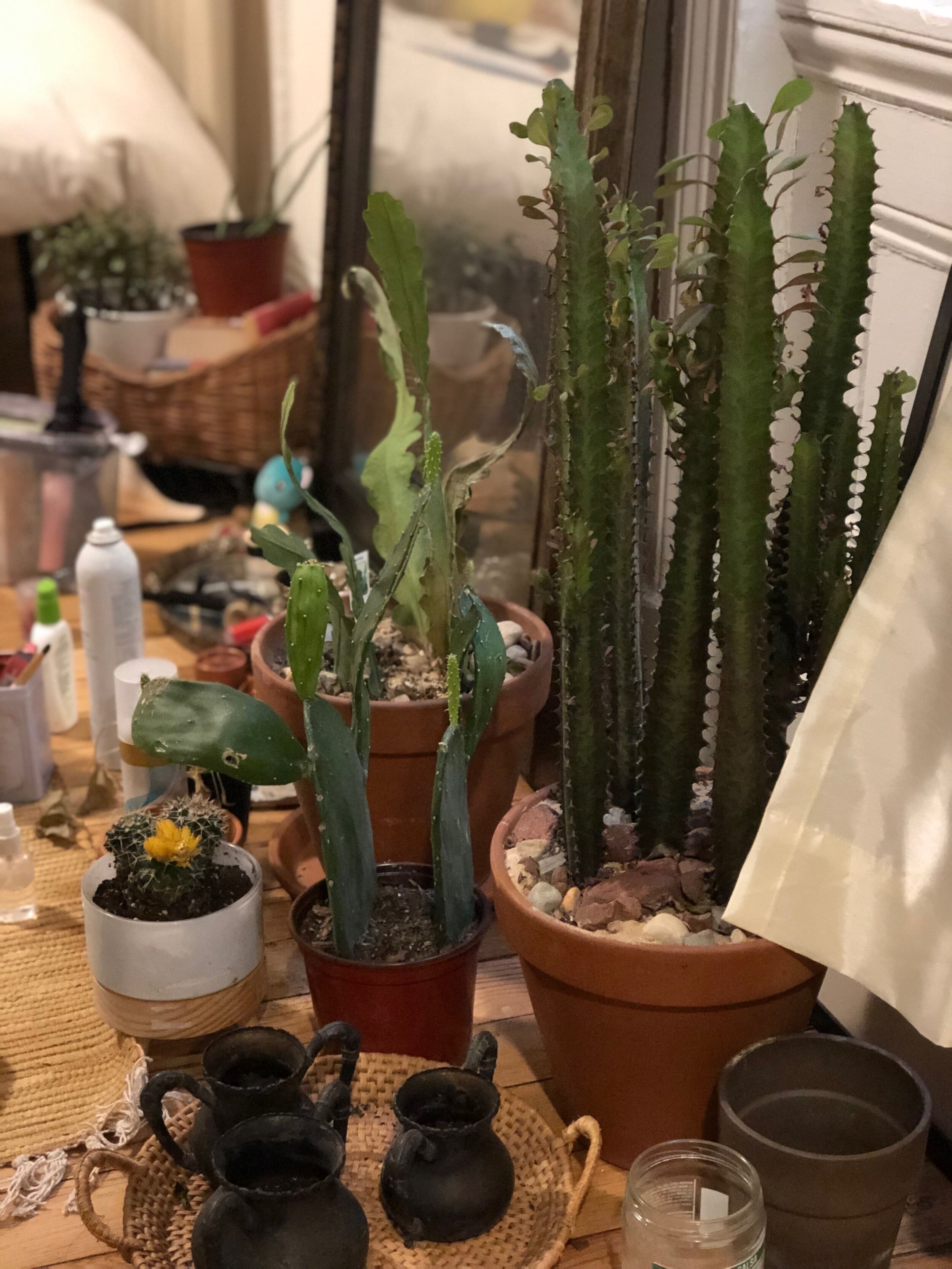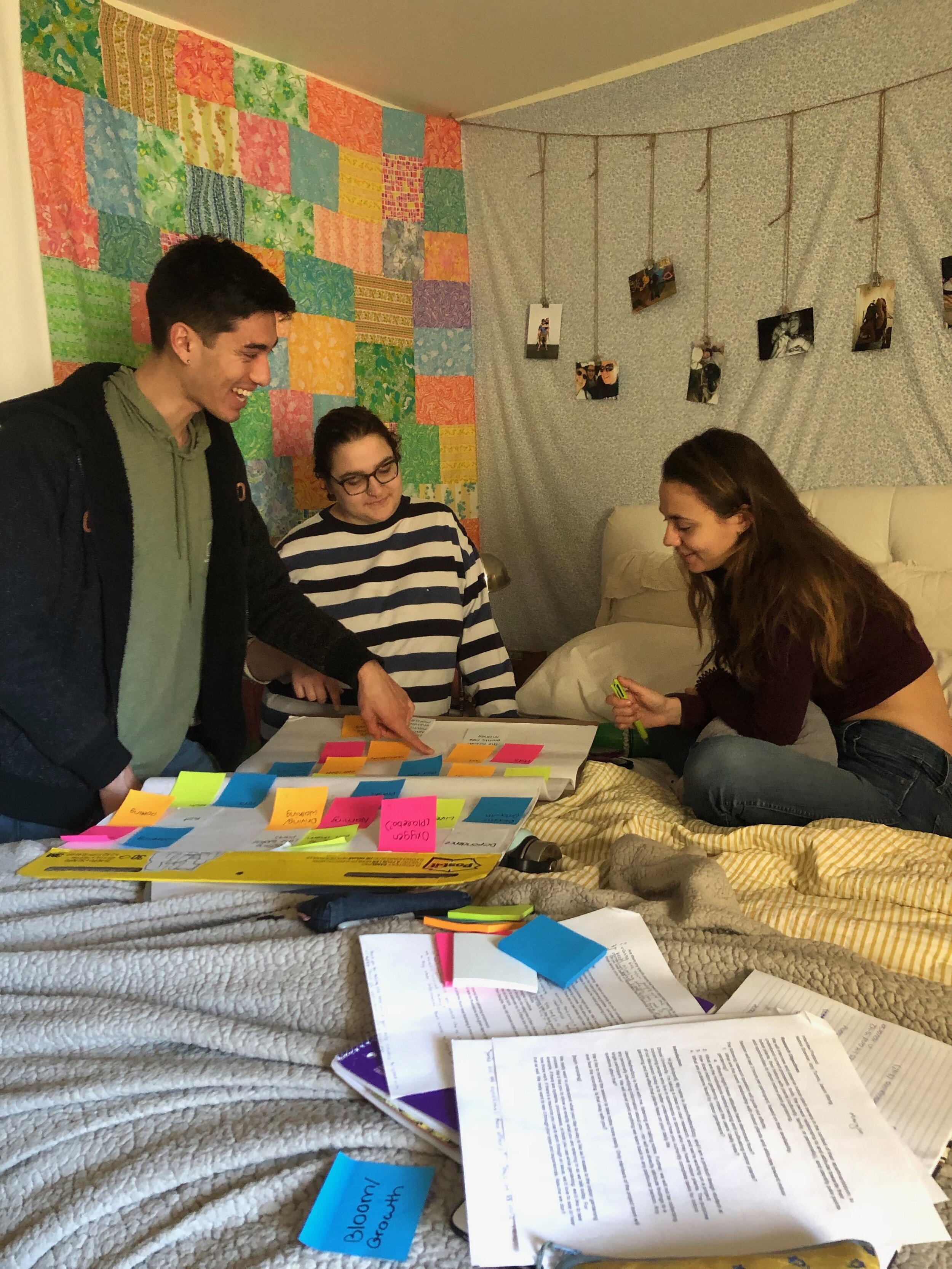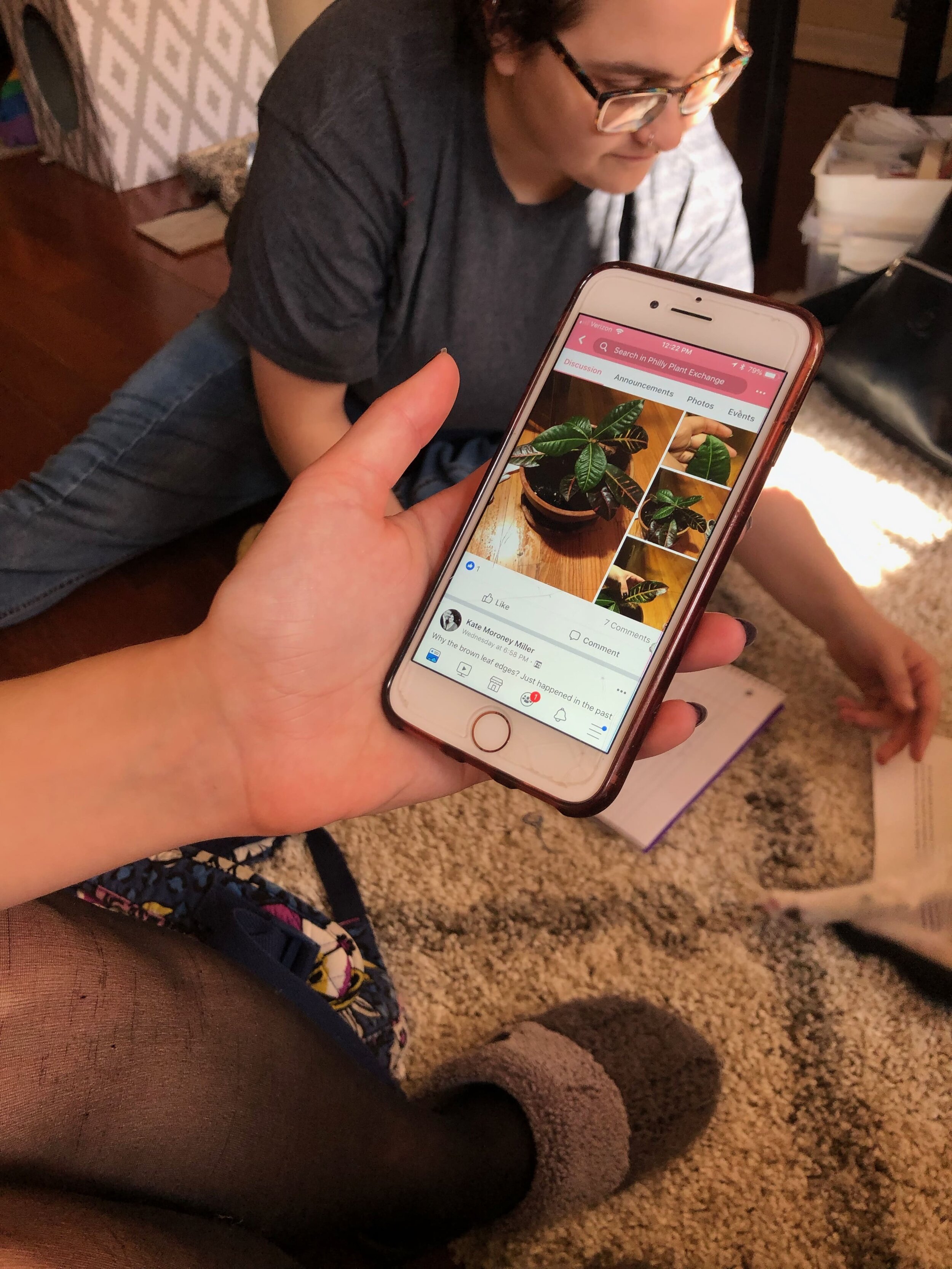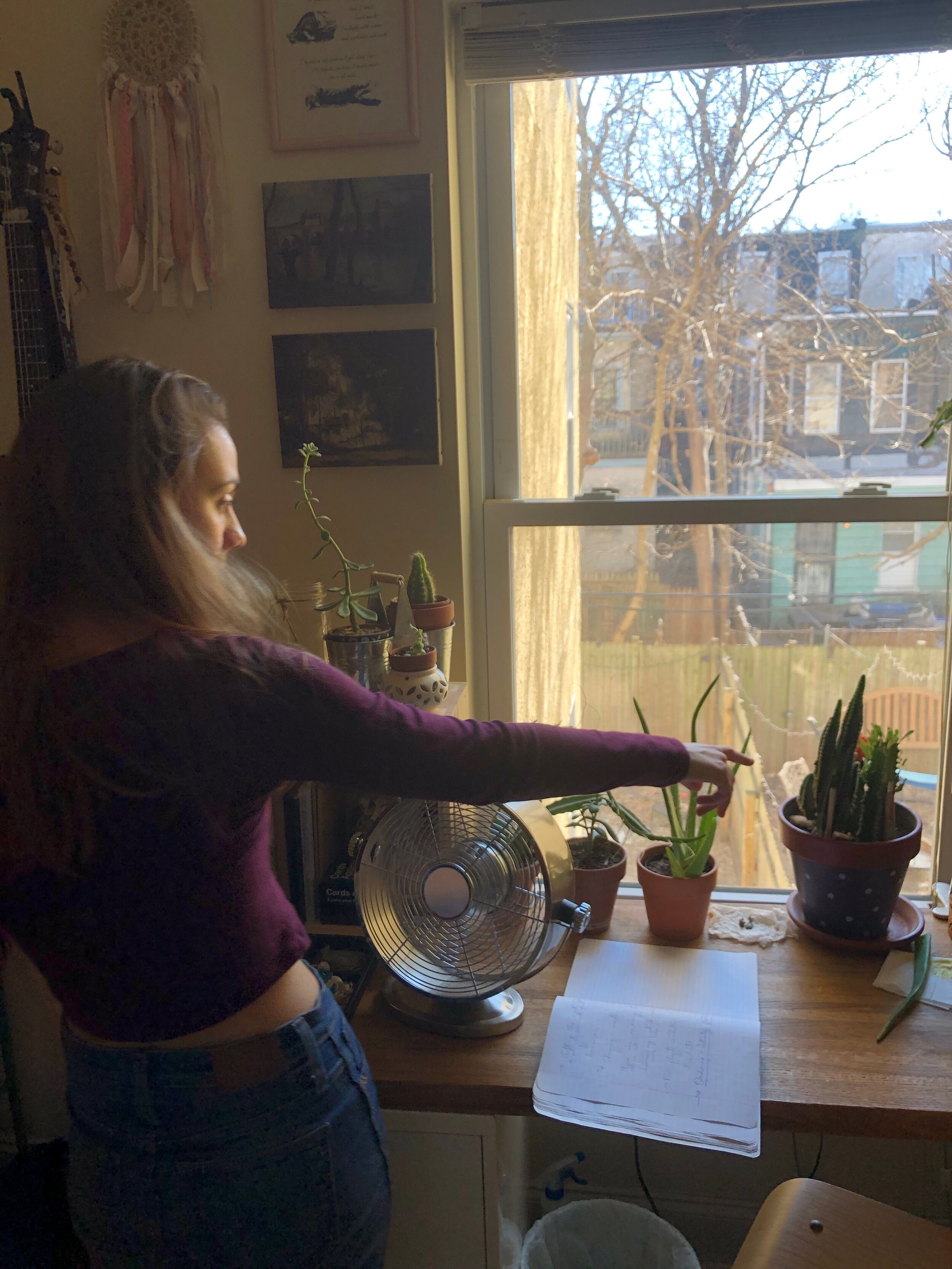User Research, UX, UI, App Design
Nursery
A mobile application that cultivates a connection between plant owners and their plants
Design Brief
How might we improve the indoor gardening experience for apartment and/or dorm dwellers?
This project started with a broad goal of improving the indoor gardening experience with a product of any kind, using a human centered design approach to put the user’s needs at the forefront of every design decision. By the end of 10 weeks, I needed to create a design and prototypes.
At the beginning of the project, I worked in a team of three designers to gather data on the current indoor gardening experience and do a deep dive with actual plant owners. After our team identified key insights, I worked on my own to come up with and develop a design solution.
Contextual Interviews
Digging Deep into the World of Indoor Gardeners
My team conducted contextual interviews with six indoor gardeners, asking questions from our interview protocol and navigating the physical sites where plant care occurs. We also conducted a post-it note brainstorm activity with the gardeners, in which we presented the participants with a series of prompts, such as challenges, delights, memories, and costs, and requested them to write down on post it notes everything that came to mind for each one.
Key Questions
What are the users’ relationships with their plants?
Where have these attitudes and relationships stemmed from?
What are problems faced by indoor gardeners, and what are current solutions?

Contextual interviews allowed us to observe the environments and constraints that shape plant ownership and have plant owners walk us through their plant care process.

Plants tucked around the main living space make the owner feel cozy and lively.

Having the user herself group her thoughts allowed us to see trends in the attitudes towards plant ownership. Ranking post-it notes in order of importance pulled out information that was most salient.

In our post-it note brainstorm activity, the participants wrote down their thoughts and associations with a series of prompts (such as challenges, delights, memories, and costs) on post-it notes.

Documenting the tools and artifacts showed us where there were gaps in user needs that needed to be filled.

Many indoor gardeners formed special connections with their plants, and treated with with compassion and care.
Qualitative Analysis
Uncovering Insights
Personas
Using the data and understanding from the interviews, we created three main personas for indoor gardeners. These personas were based mostly on motivators for owning plants and experience level. These personas helped us understand who we should be designing for and what their needs and desires are.



Key Insights
Seeing growth promotes attachment
When gardeners see that their plants are growing and doing well, their excitement and attachment to the plant spikes, and they feel more motivated to take care of it.
Visual cues important for proper care
Plant owners rely mostly on visual cues from the plant to determine proper care, such as using soil moisture, wilting, and color.
Friends and family are motivators
Plant owners tend to turn to friends and family for advice on plant care, and encouragement and celebration when they want to share milestones and the status of their plants.
Problem Statement
Lack of visible growth and confusion about proper care methods causes indoor gardeners to get discouraged.
New and intermediate plant owners may not know how to properly care for their plants, making them feel unconfident and uneasy. In addition, they may be unable to see day-to-day growth, causing them to feel confused about why their plant doesn’t seem to be growing or why it’s condition seems to be worsening. All of these factors cause them to feel discouraged and eventually give up plant ownership. This led to the question…
“How might we help users stay motivated and invested in their plants?”
Ideation
After having determined my key insights and problem statement from the research, I split off on my own to continue the design process. I began to ideate based off of my “How Might We” statement, with both physical products and app designs.
My goal was to keep the indoor gardeners motivated, connected, and invested in their plants. Ideas ranged from physical tools to help plant owners take care of their plants, to gamifying plant ownership, to cultivating a personification and parental relationship with the plant.
Validation
Getting feedback from the user early on
The top concepts from ideation were shown to the indoor gardeners to see which ideas had the most potential. The main goal was to see “Do they need it?” and “Do they want it?” Users were asked to rank the ideas based on these criteria and provide their thoughts and reactions to each.
Three ideas emerged that the plant owners were most excited by. These three mobile app features were also extremely complimentary, and together helped to round out what each was individually lacking
Growth Tracker
“I would like if it could take the photos and do something with them like create a time lapse.”
“It would be helpful to not just have photos but document other features of the plant rather than height, such as budding of flowers, number of buds and blooms.”
2. Plant Community
“It should not just be people you know but others in the area who also have the interest in plants.”
“You could see what others are successful with and can learn from them.”
3. Virtual Collection
“It could be competitive and fun between friends.”
“It needs some purpose other than just collecting the plants within your phone.”
Opportunity
A Plant Care Application
Combining the features of these three concepts above, I identified an opportunity to create an app that helps the user stay informed and connected to their plants by: logging plants they own, tracking growth and visual changes, and fostering a local community. Based on this identified opportunity, I refined my previous “How Might We” statement to continue to guide my design…
“How might we help indoor gardeners stay motivated and invested in their plants by integrating plant monitoring, education, and social connection?”
Design Sketches
App Screen Ideation
I began to brainstorm the different app screens that an indoor gardener would need and build out the features based on my research insights feedback on the concepts. Features include a collection page displaying all of the users logged plants, care pages for each plant with time lapse and measuring functions, and a social page.
Prototyping
Designing for a Deeper Connection
After having analyzed apps already on the market and approaching the first iteration of my own plant care application, I realized that the real opportunity here was greater than just allowing the indoor gardener to qualitative and quantitatively tracking their plants; the real opportunity was to encourage a deeper connection and parental bond between the gardener and their plants. Many of the plant owners already mentioned to me how they have names for their plant and see them as pets with their own personalities. This realization guided my approach to the display and treatment of the plants.
“the real opportunity was to encourage a deeper connection and parental bond between the gardener and their plants”
Wireframes of the app screens, later prototyped for testing
Usability Testing
Testing the Application with the User
Using a simulated app prototype, I had several indoor gardeners test out the app and provide feedback. Users were given several tasks to test the key functions of the user experience, such as navigating one’s plant collection, adding a new plant, and adding plant updates and notes.
Improving affordances
“It’s not immediately clear that you can click on the plants to learn more about them.”
Clarifying the Time Lapse Feature
“I don’t exactly understand the timelapse icon.”
More Robust Growth Chart and Notes
“On the growth graph, it would be helpful to see when you performed different care actions in comparison to growth.”
Less Emphasis on the Social Page
“I’m downloading this to track my plants’ changes, so I think the tracking is more important than the social page”



















